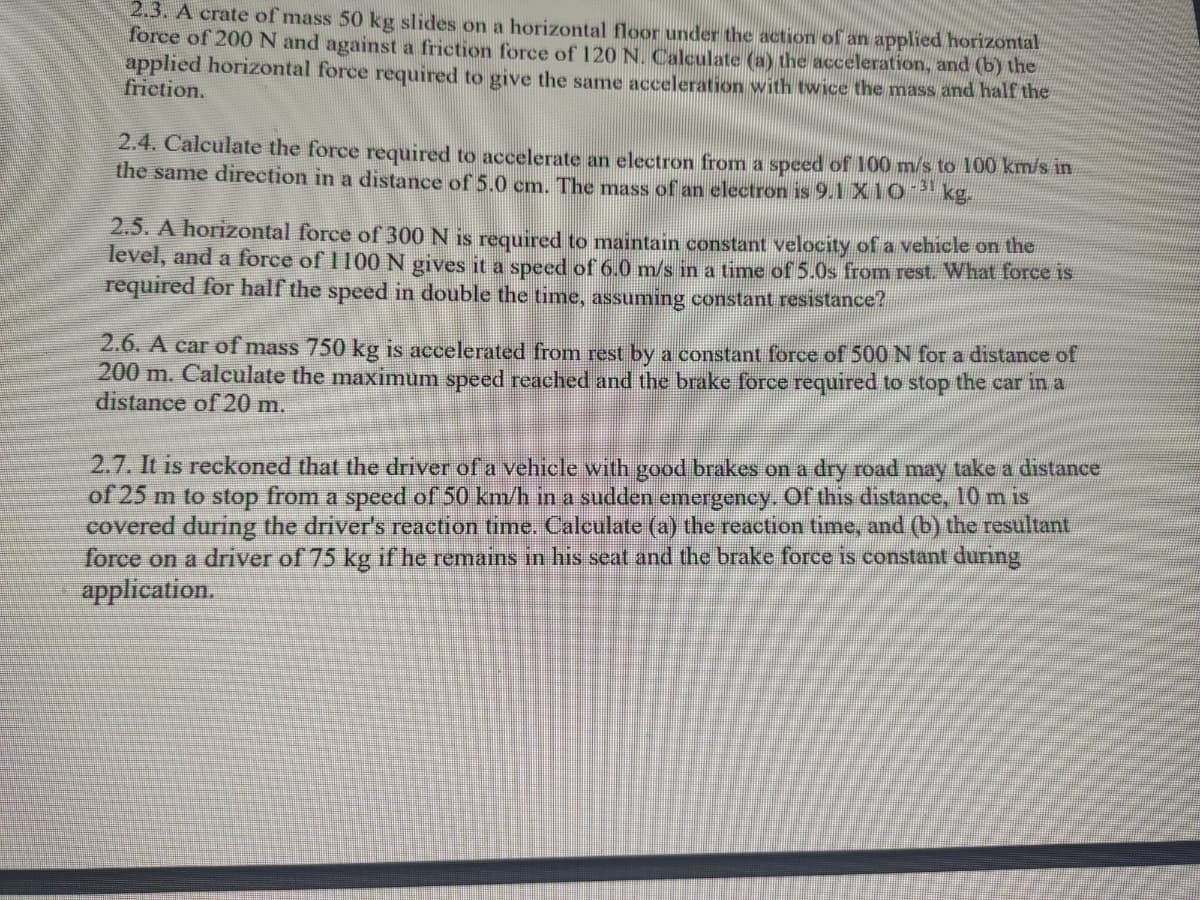2.3. A crate of mass 50 kg slides on a horizontal floor under the action of an applied horizontal force of 200 N and against a friction force of 120 N. Calculate (a) the acceleration, and (b) the applied horizontal force required to give the same acceleration with twice the mass and half the friction.
2.3. A crate of mass 50 kg slides on a horizontal floor under the action of an applied horizontal force of 200 N and against a friction force of 120 N. Calculate (a) the acceleration, and (b) the applied horizontal force required to give the same acceleration with twice the mass and half the friction.
University Physics Volume 1
18th Edition
ISBN:9781938168277
Author:William Moebs, Samuel J. Ling, Jeff Sanny
Publisher:William Moebs, Samuel J. Ling, Jeff Sanny
Chapter6: Applications Of Newton's Laws
Section: Chapter Questions
Problem 6.4CYU: Check Your Understanding The soccer player stops after completing the play described above, but now...
Related questions
Question

Transcribed Image Text:2.3. A crate of mass 50 kg slides on a horizontal floor under the action of an applied horizontal
force of 200N and against a friction force of 120 N. Calculate (a) the acceleration, and (b) the
applied horizontal force required to give the same acceleration with twice the mass and half the
friction.
2.4. Calculate the force required to accelerate an electron from a speed of 100 m/s to 100 km/s in
the same direction in a distance of 5.0 cm. The mass of an electron is 9.1X10" kg.
2.5. A horizontal force of 300 N is required to maintain constant velocity of a vehicle on the
level, and a force of 1 100N gives it a speed of 6.0 m/s in a time of 5.0s from rest. What force is
required for half the speed in double the time, assuming constant resistance?
2.6. A car of mass 750 kg is accelerated from rest by a constant force of 500 N for a distance of
200 m. Calculate the maximum speed reached and the brake force required to stop the car in a
distance of 20 m.
2.7. It is reckoned that the driver of a vehicle with good brakes on a dry road may take a distance
of 25 m to stop from a speed of 50 km/h in a sudden emergeney. Of this distance, 10 m is
covered during the driver's reaction time, Calculate (a) the reaction time, and (b) the resultant
force on a driver of 75 kg if he remains in his seat and the brake force is constant during
application.
Expert Solution
This question has been solved!
Explore an expertly crafted, step-by-step solution for a thorough understanding of key concepts.
This is a popular solution!
Trending now
This is a popular solution!
Step by step
Solved in 3 steps with 1 images

Knowledge Booster
Learn more about
Need a deep-dive on the concept behind this application? Look no further. Learn more about this topic, physics and related others by exploring similar questions and additional content below.Recommended textbooks for you

University Physics Volume 1
Physics
ISBN:
9781938168277
Author:
William Moebs, Samuel J. Ling, Jeff Sanny
Publisher:
OpenStax - Rice University

University Physics Volume 1
Physics
ISBN:
9781938168277
Author:
William Moebs, Samuel J. Ling, Jeff Sanny
Publisher:
OpenStax - Rice University